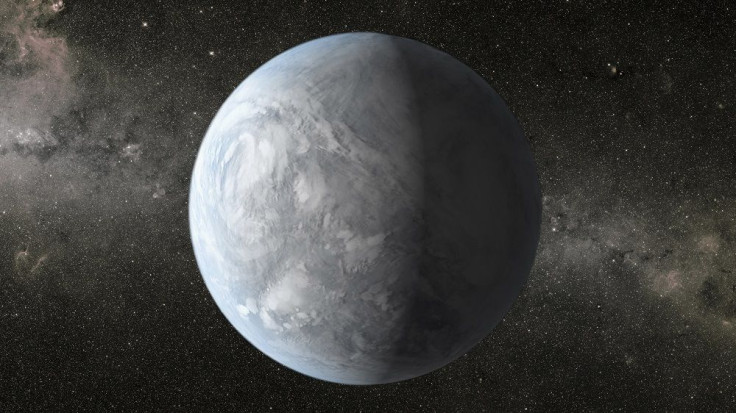Scientists release first weather map of the exoplanet HD 189733b; surface continues to be swirled by 5400mph winds

A hurricane with strong winds can cause devastation on Earth. However, scientists know about an exoplanet in the Vulpecula Constellation around which winds blow at an enormous speed, much greater than what is expected out of a hurricane.
According to the researchers, exoplanet HD 189733b is surrounded by wind speeds over 5,400 mph. The wind speed recorded by the astronomers on the explanet is more than 20 times the maximum wind speed ever recorded on Earth. This makes the velocity seven times the speed of sound.
"This is the first ever weather map from outside of our solar system," said lead researcher Tom Louden of the University of Warwick, in a press release. "Whilst we have previously known of wind on exoplanets, we have never before been able to directly measure and map a weather system.”
During the study, the researchers at the University of Warwick measured the velocity on the two sides of HD 189733b. The team found strong winds moving at a pace of 5,400mph from its day side to its night side.
The researchers used high resolution spectroscopy of the Sodium absorption featured in HD 189733b’s atmosphere to measure the velocity. The change in the wavelength induced by the Doppler effect as HD 189733b’s atmosphere shifted toward or away from Earth enabled the researchers to measure the velocity.
According to the researchers, the exoplanet's 5,000 mph wind speed is caused by its closeness to the star. It belongs to a class of planets called “Hot Jupiters” and is nearly 63 light years away from our solar system.
The research team is excited to have discovered a way to may weather system of other distant planets. The researchers believe that the Doppler technique used by them to measure the wind velocity could be applied to other planets as well.
Contact the writer at feedback@ibtimes.com.au, or let us know what you think below.





















